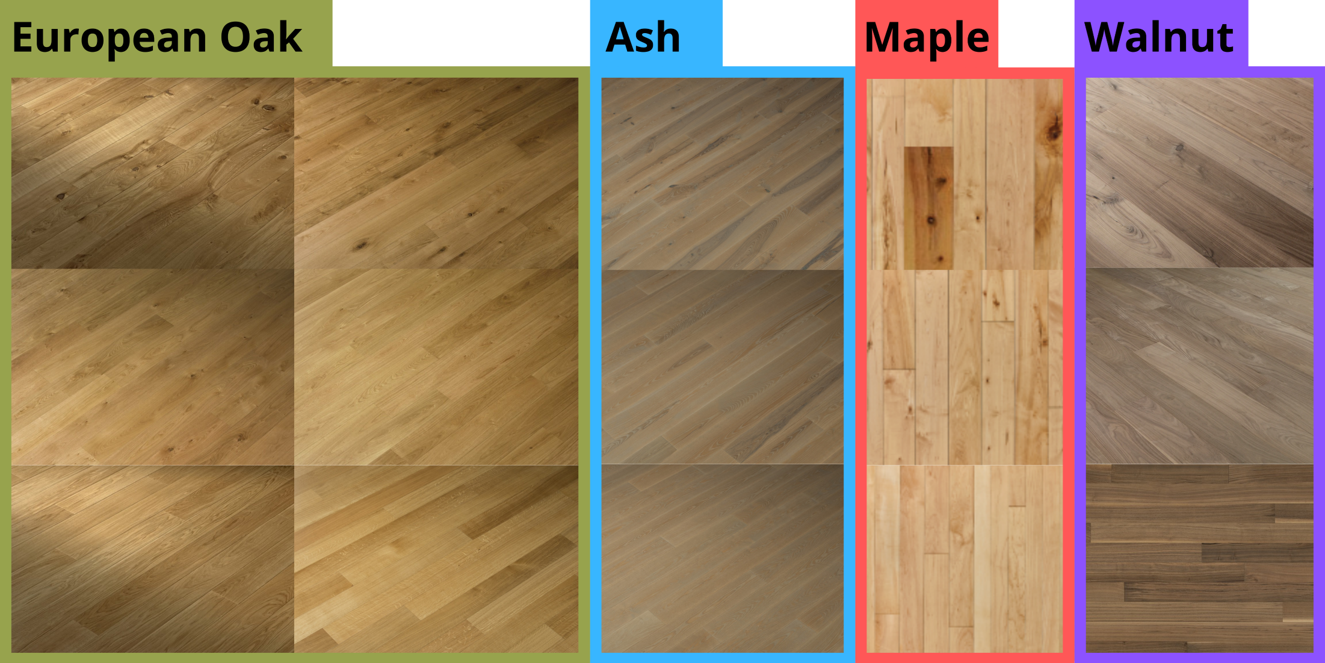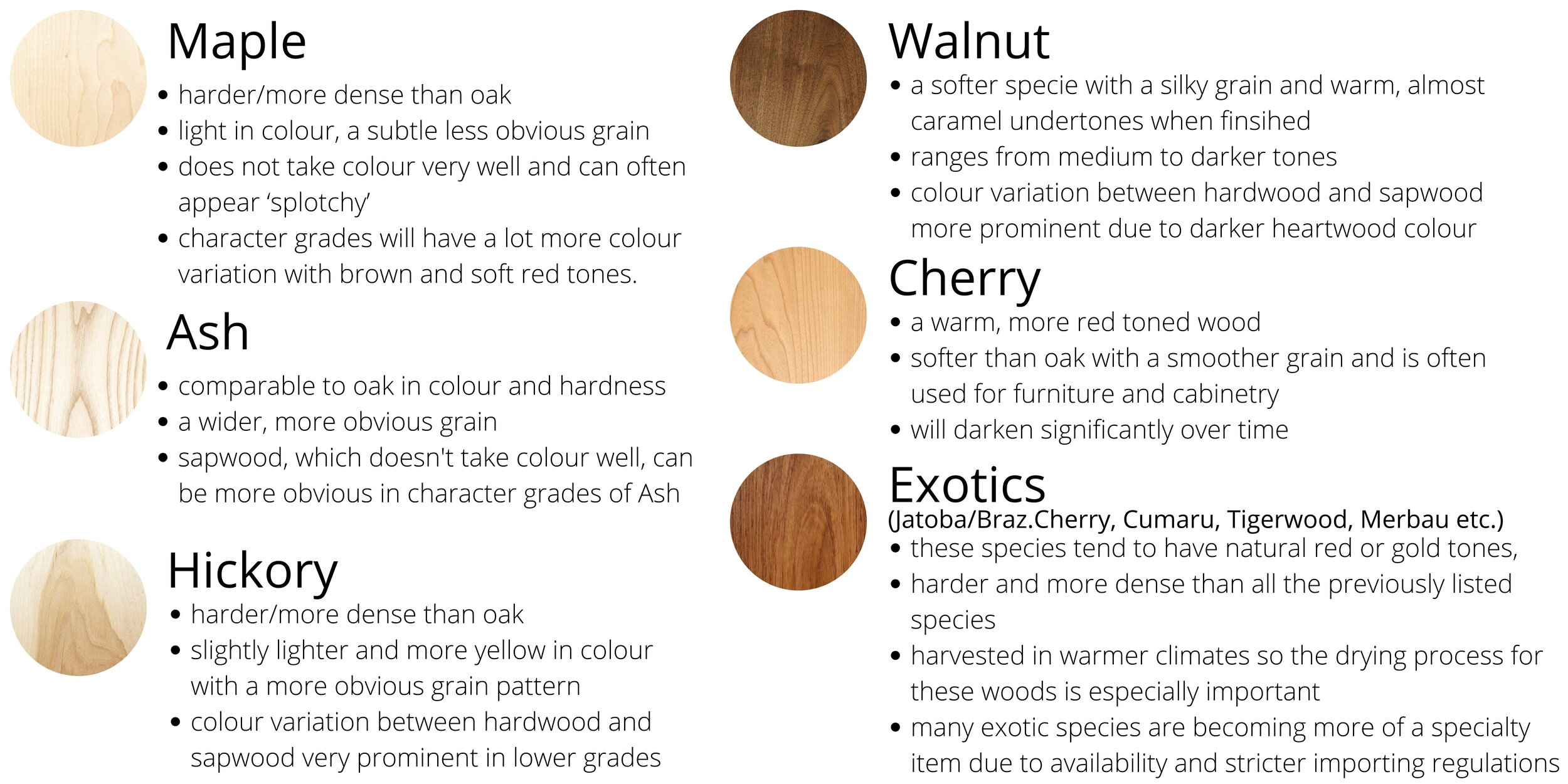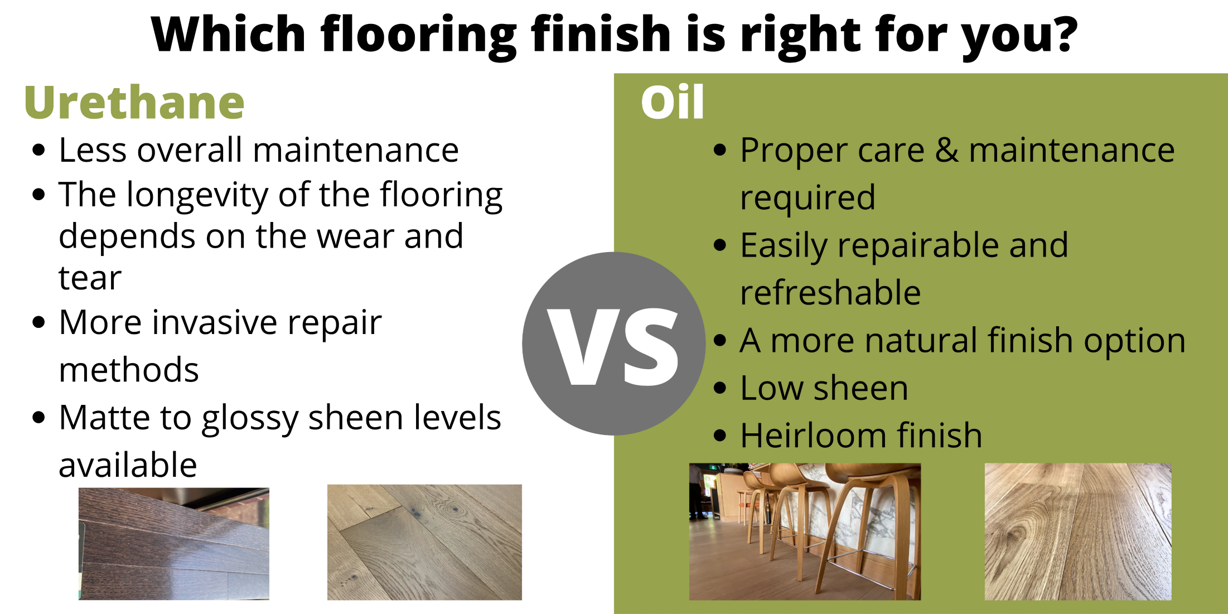Hardwood Flooring Guide Part 1
Whether you’re planning a renovation or building from scratch, choosing your materials and finishes can quickly become overwhelming. It’s impossible to know everything about every trade and every material involved in a large project– but that’s why there are experts available to help guide you! Here, we’re outlining some important considerations for selecting a great hardwood floor for your home, office, or commercial space.
What is “Hardwood Flooring”?
Firstly, what is hardwood flooring? Hardwood flooring is a product manufactured using real wood timbers (trees) for use as flooring material, including both solid and engineered platforms. It is important to note that Laminate is not considered an engineered hardwood flooring.
People often ask, ‘Is solid or Engineered better’? The short answer to this question is: “it depends”. Both solid and engineered flooring have their own strengths, and the details of your project, and your taste, will make one of them the better choice.

Solid hardwood flooring is made using one piece of solid wood from top to bottom – the specie you see on the surface is the full thickness of the floor. Solid flooring can be used on or above grade (main floor and upper levels but not in basements). When considering a solid flooring you must also consider the width of plank you are looking for, as in a solid material, the wider you go the less stable the planks become. It is uncommon to find most species in a solid plank wider than about 5”. Standard solid flooring is ¾” thick and can be sanded all the way down to the T&G in the plank, so, many times!
Engineered hardwood flooring is made using multiple layers, the top layer always being made of real wood. Due to the construction and layers of engineered flooring it is more stable, which allows for wider widths and longer lengths. Engineered floors can be installed on, above or below grade (main floor, upper levels and in basements). Depending on the thickness of the Lamella – the topmost layer of wood- engineered floors can also be sanded down multiple times. Engineered flooring does better in humid or dry environments than its solid counterpart due to the multiple layers in its construction. This allows for engineered floors to be used in more applications such as 3 season rooms and cottages, bathrooms, kitchens, laundry rooms, and even on boats!
Consider: Species & Wood Grade
Another thing to consider is the specie and wood grade you are looking for in your hardwood flooring. While these can often depend largely on aesthetics, different species and grades of those species have different characteristics which affects both look and performance.

How grade and specie can affect the look of your flooring choice
Red, White or European Oak are the most widely used species for wood flooring. This is because there are several different wood grades and cuts you can get from these individual species to create several different looks. Oak is a hard specie which is important for durability, and it also takes stain & finishes very well. Overall, there’s a lot you can do to create different looks with this one specie.
Many other species including Maple, Ash, Hickory, Walnut, Cherry, and various Exotic Species are also commonly used in flooring. Here is a brief overview of these species in comparison to oak:

How various species compare to Oak
How various species compare to Oak
Consider: Finish (Oil vs. Urethane)
A floors durability has just as much to do with the finish as it does the specie. There are two finishes available for hardwood flooring: Urethane and Oil finishes. Each finish has it’s pro’s and cons and its important to decide which finish is going to be the right choice for your specific project and your lifestyle.

Urethane – A urethane finish is what’s commonly used in the North American market of flooring. A Urethane is a film building finish, which means multiple layers of the finish are applied to the wood surface to cover the wood and protect it. Traditionally a urethane finish has a higher sheen but with technological advancements in the industry, the matte look is more common and more available. A urethane finish will look its absolute best the day its installed and wear from that point. When living on a urethane finished floor you are wearing through the finish down to the bare wood. Repair of this finish for scratches and dents is difficult as a DIY and typically will require sanding the entire floor or having individual planks replaced. A scratch on a urethane finished floor will typically show up white as you are damaging the finish and not the wood itself. A urethane floor requires less maintenance and most flooring cleaners can be used on these floors. Basically, you will wear through a urethane finished floor over the course of several years until it either needs to be replaced or re-finished. Keep in mind that thinner wear layers often can’t be re-finished, and Wire brushed and Hand-scraped surfaces require more sanding than a smooth surface.
Oil – An Oil finish on the other hand, is more of a traditional approach to floor finishing, more often used throughout Europe than in Canada/North America. An oil finish is a penetrating finish that bonds with the wood fibers and hardens to protect the wood from within. When you feel an oil-finished wood surface you are feeling the wood as opposed to the finish covering it. The key advantage to oil finished flooring is that it is repairable – without sanding. Any minor scratches or dings can be easily repaired by doing a light abrasion and applying oil to the affected area – of course this is dependent on the colour as well. Oil floors can also be restored to their original luster with proper care and maintenance. Specific cleaning and maintenance products are required for this type of finish, and to keep the floor looking its best, most manufacturers recommend re-oiling the floor every 1-5 years. The re-oiling however is much less invasive than a sand and re-finish, and for most natural oils the homeowner does not have to vacate. Simply, an oil finished floor is a repairable flooring choice that can be enjoyed for generations.

A spot repair on an oil-finished floor in a Restaurant setting
While there are plenty more things to consider when selecting your hardwood flooring, these key factors are a great place to start! The more educated you are as a consumer, the better a selection you are making for yourself and your clients, and the happier you will be with your final selection!
We will be continuing this series in Hardwood Flooring Guide: Part 2, so keep an eye out!
